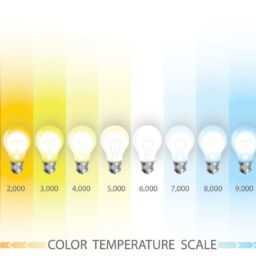Introduction
In the wake of the restructuring of the U.S. automobile industry, the U.S. car market is now dominated by seven major consolidated car companies: General Motors, Ford, Chrysler/Fiat, Toyota, Lexus, Hyundai, and Honda. In particular, as the U.S. brands recover, each is re-imaging itself as energy efficient by driving down all car models’ fuel consumption and consolidating their number of dealerships. In the quest to reduce operating costs these dealers are investing in facilities that match their brand’s fuel efficiency efforts.
To get an idea of the kind of fuel efficiency efforts U.S. auto brands are making, consider Ford’s new EcoBoost engine. According to Ford, the EcoBoost engine combines advanced direct injection technology and turbo-charging with a gasoline engine. The end result is an engine that can deliver up to 20 % better fuel economy, 15 % lower CO2 emissions, and improved driving performance when compared to larger displacement engines.
Car dealers are interested in both energy efficient indoor lighting and energy efficient outdoor lot lighting. They are increasingly very comfortable with LED lighting technology because they have witnessed it mainstream into automobile headlight and taillight applications. LED’s are now mainstreaming into dealer showrooms and outdoor lots.
The Section 179D EPAct Tax Opportunities
Pursuant to Energy Policy Act (EPAct) Section 179D, car dealerships making qualifying energy-reducing investments in their new or existing locations can obtain immediate tax deductions of up to $1.80 per square foot.
If the building project doesn’t qualify for the maximum EPAct $1.80 per square foot immediate tax deduction, there are tax deductions of up to $0.60 per square foot for each of the three major building subsystems: lighting, HVAC (heating, ventilating, and air conditioning), and the building envelope. The building envelope is every item on the building’s exterior perimeter that touches the outside world including roof, walls, insulation, doors, windows and foundation.
Unique 2011 Opportunity: Enhanced Bonus Tax Depreciation
Outdoor lot lighting is ordinarily eligible for MACRS depreciation, but building owners who install LED lighting systems after September 8, 2010 through December 31, 2011 can take 100% depreciation tax bonus immediately. Even if building owners miss this 2011 window, they can enjoy a 50% tax depreciation bonus on equipment placed in service from January 1, 2011 through December 31, 2012.
Outdoor Lot Lighting
Outdoor lot lighting is lighting that illuminates only the landscaping or building exterior (but not parking areas or walkways) as well as plant-grow lights, but which does not relate to the operation or maintenance of the building. Outdoor lot lighting systems are usually pole-mounted or freestanding and serve to illuminate sidewalks, parking or recreation areas.
For the first time in U.S. Tax History, based on the bonus depreciation benefits described above, 100% of the cost of an outdoor lighting project can be expensed for tax purposes.
Dealer Facility Restructuring at Ford, General Motors and Chrysler
With the total number of U.S. dealerships falling from more than 30,000 to about 18,000, when sales volumes recover each dealership will by definition have to be a much larger facility capable of supporting higher sales and service volumes. There is an overall decline in U.S. car sales over the last decade and a drop in the number of car dealerships since 1970.
When energy efficient tax incentives were first enacted in 2005, foreign car dealers were financially strong and focused on dominating the market for small, efficient cars, which meant that it was primarily the foreign brands that were making energy efficient lighting upgrades to their dealership locations and taking advantage of the EPAct tax savings. For instance, Emich Volkswagen of Denver has installed LED lighting throughout its new and used car dealership. The LED retrofit project reduced Emich VW’s lighting energy use by nearly 80% and the dealership will earn a return on its investment in approximately 18 months based on energy savings from its LED lighting and conservation rebates offered by Xcel Energy and the City and County of Denver.
Because of their restructuring and the market demand for more efficient vehicles since 2008, American car brands have followed their foreign counterparts’ lead.
Federal Lighting Bans
Dealerships that have not upgraded lighting in the past five or more years often have inefficient T-12 or metal halide lighting whose production or importation is now banned by the federal government. Therefore, sooner or later these dealers will be forced to upgrade to more efficient lighting like T-5 and T-8 fluorescents, or the new highly efficient LED lighting.
LED’s are up to four times more energy efficient than traditional incandescent bulbs, which means that their ability to drive down energy operating costs is twofold: energy savings and their related tax savings.
Ford
Ford has shuttered its long-standing Mercury brand. Accordingly, it has opted to consolidate certain Ford and Lincoln dealerships around the country. Some exclusively combined Lincoln-Mercury dealers experienced less gross sales volume than Ford only or combined Ford-Lincoln dealerships. While there are many factors that influenced Ford’s decision to cut back on the Mercury brand, what is important is the effect a reduced number of brands will have on Ford’s dealership strategy going forward.
Fewer brands in its portfolio, combined with its improving financial situation, will allow the automaker to focus not only on product quality, but also on cost reductions across the board. Ford’s anticipated annual operating profit of about $8 billion would be its best showing since a $10.2 billion profit in 2000, when U.S. industry auto sales were 33 percent higher. Earning higher profits at a lower sales volume has been one of the keys to the company’s strategy since Chief Executive Alan Mulally arrived in October 2006. Indications are that that some of the required building upgrades will range from $300,000 to $1,500,000 per dealership. Some dealers are balking at these figures, which may result in more closures unless dealers are receptive to the energy and tax savings that come with more efficient lighting equipment. Upgrading to long life energy LED lighting is a way to reduce ongoing operating and maintenance costs.
General Motors
The largest dealership facility reduction has been at General Motors, which has slimmed itself down to 4 brands, namely Cadillac, Chevy, Buick and GM after jettisoning Oldsmobile, Pontiac, Saab, Saturn and Hummer. GM has launched the largest and most widespread re-imaging plan of the domestic car dealers. They sent inspectors to analyze all of their dealerships’ facilities attributes, including appearance, location and overall quality. Many dealerships that were fortunate enough to not be terminated are now obligated to make major facility upgrades.
Chrysler
Chrysler has merged with Fiat, giving Fiat a major U.S. distribution network for its more fuel-efficient product line. Recently reported dealer data indicated that the average Chrysler dealer’s pre-tax earnings fell to $150,000 during the economic downturn. This means that a $15,000 reduction in facility energy operating costs equates to a 10% increase in pre-tax earnings.
Dealers can combine energy efficient LED lighting with energy efficient HVAC in both the conditioned (air conditioned) and non-conditioned portions of the facilities for $1.20 per square foot EPAct tax deductions.
Conclusion
The newly configured U.S. automobile industry is becoming more and more centered on fuel efficiency, both for vehicles and the dealership facilities. By upgrading indoor and outdoor lot lighting to LED’s, dealerships have the opportunity to significantly reduce their energy expenses while realizing substantial tax savings.
BY by GAHZLY
#Tax #Opportunities #LED #Lighting #Car #Dealerships


